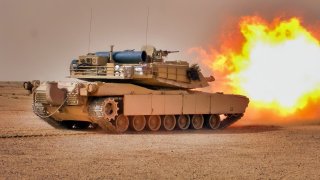Armored Coffins: 5 Worst Tanks Ever to Go to War on Planet Earth
Main battle tanks (MBTs) remain crucial in modern warfare, as seen in the Russia-Ukraine conflict. However, not all MBTs have proven effective. The Soviet T-35 was too slow and mechanically unreliable. North Korea's outdated T-34s are no match for modern tanks. Iran's Sabalan, an upgrade of the old M47 Patton, is similarly obsolete.
Summary and Top Points You Need To Know: Main battle tanks (MBTs) remain crucial in modern warfare, as seen in the Russia-Ukraine conflict. However, not all MBTs have proven effective. The Soviet T-35 was too slow and mechanically unreliable. North Korea's outdated T-34s are no match for modern tanks. Iran's Sabalan, an upgrade of the old M47 Patton, is similarly obsolete.
-The British A38 Valiant never made it past testing due to poor design, and Japan's Type 95 Ha-Go was outdated by the time it faced American forces in WWII.
-These tanks highlight the importance of advanced, reliable designs in armored warfare.
The 5 Worst Tanks in Military History
The main battle tank may be an old concept, but armored vehicles are still important in modern warfare. The fighting between Russia and Ukraine is the best current demonstration of the continued relevance of these mobile weapon platforms, as both Moscow and Kyiv deploy MBTs to the frontlines of the conflict. Tanks allow armed forces to achieve tactical surprise, provide protection for crews, and break the enemy’s line.
But not all MBTs are created equal. The five listed here fall short for a number of reasons.
The Soviet T-35:
The T-35 may be the worst Soviet tank design ever. It was developed to support the Red Army in the Second World War, but this large MBT was too slow and mechanically underwhelming. The T-35’s only useful attribute was its five independent turrets. The tank’s nearly 10-meter-long hull mounted three cannon, as well as two machine gun turrets fitted with 76mm KT-28 low-velocity guns firing 96 rounds of ammunition. But the T-35’s operational history was abysmal. During Operation Barbarossa, most T-35s were lost due to mechanical failures or immobilizations, not enemy fire.
The North Korean T-34
During the Soviet-designed T-34’s WWII heyday, this MBT was actually quite powerful. Equipped with a 76.2mm main gun, solid cross-country mobility and enhanced armor protection, the T-34 was a Red Army favorite.
The tank was powered by the world’s first diesel engine specifically built for MBTs. Now that nearly eight decades have passed since the Soviet tank was first introduced, the T-34 is obviously lightyears behind newer tank models. But this does not stop the North Koreans from operating T-34 tanks.
While these aging MBTs have incorporated some modest improvements, North Korea’s fleet of T-34s would not survive any confrontation with an American M1A2 Abrams or other more modern platforms.
The Iranian Sabalan
In 2014, Iran debuted its new Sabalan tank. While information remains limited, the MBT essentially appears to be an upgraded version of the American-made M47 Patton. The Patton was a solid tank when first introduced in the U.S. nearly sixty years ago. Today, it is obsolete.
Like the North Korean T-34, the Iranian Sabalan would pose little threat to modern tanks in a conflict.
The British A38 Valiant
The UK’s Valiant was developed during the Second World War but never made it past the prototype phase. Engineers made sure the Valiant was heavily equipped with protective measures. The British tank was built with 114mm armor, better than other tanks of the time. But the tank had many flaws. Not only was the Valiant super slow, but it was also very difficult to control. During the platform’s testing stage, the driver had to halt the process due to fatigue. For this reason, the Valiant never progressed in the production pipeline.
Japanese Type 95
Last but not least is the Japanese Type 95 Ha-Go tank, which was used by Japan during the Second Sino-Japanese War. By the time this MBT was deployed against American armor in the Pacific during the Second World War, it proved to be an outdated platform. The slow tank could only reach speeds of 28 miles per hour, and its 37mm gun lacked the power needed to strike targets accurately.
About the Author: Maya Carlin, Defense Expert
Maya Carlin, National Security Writer with The National Interest, is an analyst with the Center for Security Policy and a former Anna Sobol Levy Fellow at IDC Herzliya in Israel. She has by-lines in many publications, including The National Interest, Jerusalem Post, and Times of Israel. You can follow her on Twitter: @MayaCarlin.
All images are Creative Commons and/or Shutterstock.


